New Year's Eve in the World
Albania
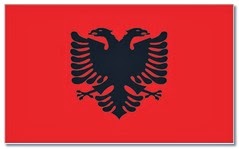
Preparations for the New year 's eve in Albania Before long
home December 31st . It starts with the Christmas tree Which in Albania is
known as " New Year's Tree " or " New Year's Pine ." On
These day , 31st December, grandparents , parents , children and Relatives have
gathered together to spend Some remarkable moments all together . Having dinner
with abundant year different kinds of delicious dishes tradition.Another is
Also a part of the tradition is That of watching lot of comedy shows on That
night , as the New Year SHOULD find people smiling and full of joy.The most
amazing moment of the night is the last minute of the Old Year and the minutes
of the New Year to come . At 0:00 everybody toast and greet the others , a lot
of fireworks brighten up the sky of the city . They wish each other a
prosperous new year , full of happiness , joy , good health and lots of fortune
. It is a tradition at 0:00 That people call each other on the phone to greet
one Another or send SMS to all Their friends . 31st December is the busiest day
of year Albanian.
Austria
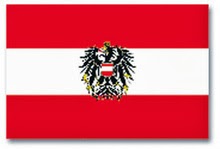
Is one of the jewels of Europe's cultural and Austrians
celebrate the New Year in a way that is both similar and different from the way
we celebrate. New Year's Eve is called Sylvesteraben, which means eve of St.
Sylvester and is celebrated across the country by eating cinnamon and red wine
in a large suckling pig feast. Many people accompanying crowd at midnight the
night marks the beginning of Carnival season. Across the cities are concerts,
parties and fireworks - Austria is a very interesting destination for New Year.
Innsbruck, for example, has parades resounding fanfare night in Old Town and
New Year, Graz and other smaller cities organizes a series of events to
celebrate. At midnight all the church bells knock over Austria. In big cities,
people dancing on the streets of New Year, the famous waltz The Blue Danube
rhythms.
Belgium

In this country, New Year's Eve (Sint Sylvester
Vooravond("Saint Sylvester 's Eve") or Oudjaar ("old
year")) is celebrated with family parties, Called réveillons in the French
speaking Areas. On television, a stand- up comedian reviews the past year after
a musical or variety show which signals midnight, when everyone kisses,
exchanges good luck greetings, and toasts the New Year and absent Relatives and
friends with champagne. Many people light fireworks or go into the street to
watch them.Most cities have their own fireworks display: the most famous is at
Mont des Arts in Brussels.Cities, cafés and restaurants is Crowded.Free bus
services and special New Year's Eve taxis(the responsible young drivers) bring
everyone home afterwards.
On January 1(Nieuwjaarsdag in dutch)their children read
"New Year's letter" and give holiday greeting cards featuring golden
of decorated paper cherubs and angels, colored roses and ribbon - tied garlands
to parents and godparents, on decorated paper.
Also belgian farmers wish a happy New Year their animals.
Bosnia and Herzegovina
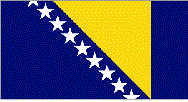
New Year is widely celebrated in Bosnia and
Herzegovina.Streets are decorated for New Year's Eve and there is a fireworks
show and concerts in all the larger cities.Children receive gifts from adults
who are dressed as Djed Mraz. Restaurants, clubs, cafes and hotels are usually
full of guests and they organize New Year's Eve parties.In Sarajevo, people
gather in the Square of children of Sarajevo where a local rock band entertains
them.Several trumpet and rock groups play until the early morning hours.At
midnight there is a big fireworks show.
Brazil

In all cities of Brazil are organized parties, and in Rio de
Janeiro people walk on the beach to see the fireworks.It takes about 30
minutes, and those present in the new year they want money, love and health.
Canada

New Year traditions and celebrations in Canada vary
regionally. New Year's Eve (also called New Year's Eve Day or Veille du Jour de
l'An in French) is generally a social holiday. In many cities, such as Toronto
and Niagara Falls in Ontario, there are large celebrations which may feature
concerts, late-night partying, sporting events, and fireworks, with free public
transit service during peak party times in most major cities. In some areas,
such as in rural Quebec, people ice fish and drink alcoholic beverages with
their friends until the early hours of January 1.
From 1956 to 1976, Guy Lombardo and his Royal Canadians
serenaded Canada on the CBC, via a feed from CBS, from the ballroom of the
Waldorf-Astoria Hotel on Park Avenue in New York City. After Lombardo's death
in 1977, the Royal Canadians continued on CBC and CBS until 1978.
In 1992, the sketch comedy troupe Royal Canadian Air Farce
began airing its annual Year of the Farce special on CBC Television, which
features sketches lampooning the major events and news stories of the year.
While the original 1992 edition was a one-off special, Year of the Farce
episodes continued as a regular feature of the Air Farce television series
which ran from 1993 to 2008 airing its series finale on December 31, 2008.
Following the finale of the television series, the original cast continued to
participate in New Year's Eve specials in the years following.
Similarly, the CBC's French language network Ici
Radio-Canada Télé airs its own yearly New Year's Eve comedy special, Bye Bye.
Unlike Year of the Farce, Bye Bye has been presented by various comedians;
originally running from 1968 to 1998, it was revived in 2006 by the Québécois
troupe Rock et Belles Oreilles. Its 2008 edition, hosted and co-produced by Québécois
television personality Véronique Cloutier, became infamous for several sketches
that many viewers perceived as offensive, including sketches making fun of
English Canadians and then American president-elect Barack Obama.
Chile
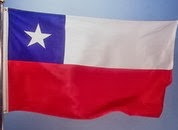
New Year's Eve celebrations in Chile include a family dinner
with special dishes, usually including lentils, and twelve grapes to symbolize
each month of the year. Family celebrations usually last until midnight, then
some continue partying with friends until dawn. In Chile's capital Santiago,
thousands of people gather at the Entel Tower to watch the countdown to
midnight and a fireworks display.
There are several fireworks shows across the conntry. Over
one million spectators attend the most popular, the "Año Nuevo en el Mar",
in Valparaiso. Since 2000, the sale of fireworks to individuals has been
illegal, meaning fireworks can now only be observed at major displays.
Many people also travel to Easter Island, off Chile's coast,
to welcome the New Year.
China
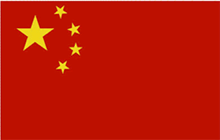
Chinese New Year is celebrated between January 17 and
February 19, when New Moon, Yuan Tan. It is celebrated by Chinese around the
world with street processions, where thousands of lanterns are lit. The Chinese
believe that evil spirits are everywhere at the time, so remove them light
fireworks. Sometimes they seal their windows and doors with paper to not let
the evil spirits from entering the house. New Year is an opportunity for
meeting family members.New Year's Eve, the Chinese eat specially prepared food
preparations being made chicken and fish, wich is said to bring luck.
Colombia
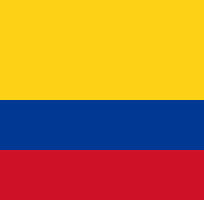
In some Colombian cities burn "old year" usually
attended by the whole family.This is usually an opportunity for fun: various
materials are making a big doll representing the old year.Inside the doll can
put some fireworks to be all the more thrilling when burning.The interior can
also contain other objects that bind various sad memories.
Costa Rica
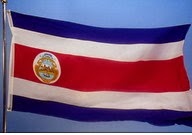
In Costa Rica, families usually gather around 9 pm for
parties that last until 1 or 2 am, the next day. There are several traditions
among Costa Rican families, including eating 12 grapes representing 12 wishes
for the new year, and running across the street with luggage to bring new trips
and adventures in the upcoming year.
Czech Republic and Slovakia

New Year's Eve (Silvestr / Silvester) celebrations and
traditions in Czech Republic and Slovakia are very similar.New Year's Eve is
the noisiest day of the year.GeneRally People gather with friends at parties,
in pubs, clubs, in the streets, or city squares to eat, drink, and celebrated
the new year.Fireworks is a popular tradition, in large cities Such as
Bratislava or Prague, the fireworks start and steadily Increase Before noon
until midnight.In the first minutes after midnight, people toast with
champagne, wish each other a happy new year, fortune and health, and go outside
for the fireworks.
In both countries all major TV stations air entertainment
Shows before and after the midnight countdown, which is followed by the national
anthem of each country.The Presidents of the republics give their New Year
speech in the morning.In recent years however the Czechoslovak national anthem
is played at midnight, in honor of the shared history of both nations.
Denmark
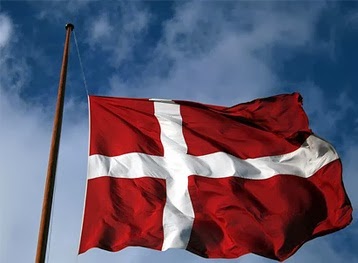
People in Denmark may go to parties or entertain guests at
home. There is a special evening meal, with concludes with Kransekage, a
special desert, along with champagne. Other traditional dishes are boiled cod,
stewed kale and cured saddle of pork. However, expensive cuts of beef as well
as sushi have become increasingly popular.Two significant traditional events
are broadcast on television and radio on December 31: the monarch's New Year message from
Amalienborg Palace at 6pm and the Town Hall Clock in Copenhagen striking
midnight. Thousands of people gather together in Rådhuspladsen (the Town Hall
Square) and cheer. The Royal Guard parade in their red gala uniforms. The
climax of the celebration is fireworks launched as the Town Hall Tower bells
chime on the stroke of midnight.
Estonia
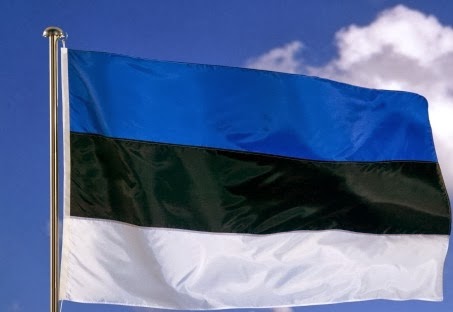
To celebrate New Year's Eve in Estonia, people decorate
villages, visit friends and prepare lavish meals.
Some believe that people should eat seven, nine, or twelve
times on New Year's Eve. These are lucky numbers in Estonia; it is believed
that for each meal consumed, the person gains the strength of that many men the
following year. Meals should not be completely finished—some food should be
left for ancestors and spirits who visit the house on New Year's Eve.
Traditional New Year food includes pork with sauerkraut or
Estonian sauerkraut (mulgikapsad), baked potatoes and swedes with hog's head,
and white and blood sausage. Vegetarians can eat potato salad with navy
beet[clarification needed] and pâté. Gingerbread and marzipan are very popular
for dessert. Traditional New Year drinks include beer and mead, but mulled wine
and champagne have become modern favourites.
Finland

In Finland, New Year's Eve is usually celebrated with family
or friends. Late supper is served, often featuring wieners, Janssonin kiusaus,
and potato salad. Some municipalities organize fireworks at midnight. Consumer
fireworks are also very popular. A Finnish tradition is molybdomancy - to tell
the fortunes of the New Year by melting "tin" (actually lead) in a
tiny pan on the stove and throwing it quickly in a bucket of cold water. The
resulting blob of metal is analyzed, for example by interpreting shadows it
casts by candlelight. These predictions are however never taken seriously.
The Finnish Broadcasting Company broadcasts the reception of
the New Year at Helsinki Senate Square. Countdown to New Year is with the
Helsinki Cathedral clock. In the afternoon programme, the German comedy sketch
Dinner for One is shown every year. On the radio, just before midnight, the
poem Hymyilevä Apollo (Smiling Apollo) by Eino Leino is read.
France
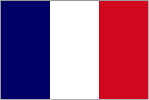
In France, New Year's Eve (la Saint-Sylvestre) is usually
celebrated with a feast, le Réveillon de la Saint-Sylvestre (Cap d'Any in
Northern Catalonia).This feast customarily includes special dishes including
foie gras, seafood such as oysters, and champagne.The celebration can be a
simple, intimate dinner with friends and family or, une soirée dansante, a much
fancier ball.On New Year's Day (le Jour de l'An) friends and family exchange
New Year's resolutions, kisses, and wishes. Some people eat ice cream.The
holiday period ends on January 6 with the celebration of Epiphany (Jour des
Rois). A traditional type of flat pastry cake, la galette des rois, made of two
sheets of puff pastry, filled with frangipane (almond paste) is eaten. The cake
contains a fève, a small china doll; whomever finds it becomes king or queen
and gets to wear a gold paper crown and choose his or her partner. This
tradition can last up to two weeks.
Germany

In Germany, parties are common on New Year's Eve
(Silvester). Fireworks are very popular, both with individuals and large
municipal displays. Every year Berlin hosts one of the largest New Year's Eve
celebrations in all of Europe, attended by over a million people. The focal
point is the Brandenburg Gate, where midnight fireworks are centered. Germans
toast the New Year with a glass of Sekt (German sparkling wine) or
champagne.Since 1972, each New Year's Eve, several German television stations
broadcast a short comedy play in English (recorded by West German television in
1963) entitled Dinner for One. A line from the comedy sketch, "the same
procedure as every year", has become a catch phrase in Germany.Bleigießen
(pouring lead) is another German New Year's Eve custom, which involves telling
fortunes by the shapes made by molten lead dropped into cold water. Other
auspicious actions are to touch a chimney sweep or have him rub some ash on
your forehead for good luck and health. Jam-filled doughnuts (called Berliner)
with and without liquor fillings are eaten. Finally a tiny marzipan pig is
consumed for more good luck.Yet another German tradition is the making of
Speckdicken - people go door to door visiting their neighbors and partaking in
this dish. It looks similar to a pancake, but the recipe calls for either dark
molasses or dark syrup, with summer sausage and bacon in the center.
Great Britain
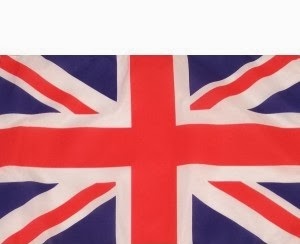
New Year at the British first person to enter the house must
be a man, because it is said to bring good luck. The first arrivals usually
bring small gifts, if you enter the house the first time a woman, a blonde or
redhead person, this means bad luck in the year began.Also, the first person
that enters the house must not come empty handed, but with small symbolic gifts
like bread, coal, salt, these are symbols of life.
Greece
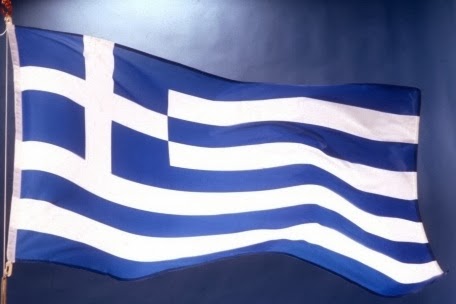
New Year's Day is dedicated to St. Basil, famous for his
kindness. Children leave their shoes by the fireplace in the New Year, get
gifts from Saint righteous. A traditional dish is "vassilopitta" a
cake in which is placed a silver or gold coin. Whoever finds the coin will have
good luck that year.
Hungary

New Year's Eve (Szilveszter) in Hungary is celebrated with
home parties and street parties, including a gathering in downtown Budapest.
Fireworks and firecrackers are popular. Champagne, wine and traditional
Hungarian New Year dishes, frankfurter sausages with horseradish, lentil soup,
fish, and roast pig, are consumed. In past centuries, some Hungarians believed
that animals were able to speak on New Year's Eve, and that onion skins
sprinkled with salt could indicate a rainy month.Hungarian christian
communities focus on celebrating mass on both New Year's Eve and New Year's
Day.
Iceland
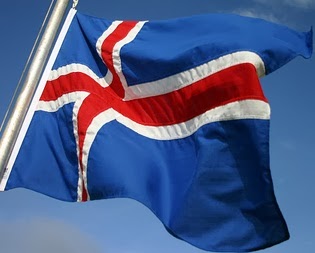
Fireworks are very popular in Iceland, particularly on New
Year's Eve. Bonfires are also very common, often accompanied by shows, musical
events and food tables.Iceland's biggest New Year's Eve events are usually in
and around the capital, Reykjavík. Most Icelanders listen to the evening radio
broadcast of the mass at Reykjavik's cathedral.[citation needed] This is
followed by dinner. Nightclubs in the city are very crowded and tend to stay
open until at least 5 am.
Áramótaskaupið ("The New Year's comedy") is an
annual Icelandic television comedy special, that is an important part of the
New Year for most. It focuses satirically on the past year, and shows little
mercy for its victims, especially politicians, artists, prominent business
people and activists. Neighbours then meet at their nearest large bonfire,
while watching the midnight fireworks.
India
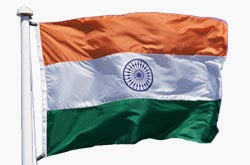
Date of celebration of the coming new year is different, as
well as habits. In some areas, mothers make the evening meal, flowers and gifts
in a special box for their children, whom the day go hand in them. In Central
India, orange flags adorn every building in New Year's Day, and in West Bengal
people decorate with flowers that turn red, pink, purple or white. Women wear
yellow clothes, the color of spring.
Iran

In Iran, the New Year is celebrated on March 21. A few weeks
before this date, people put the germinated wheat seeds in special vessels.
Until the arrival of new wheat grows reminiscent of spring and new life begins.
Ireland
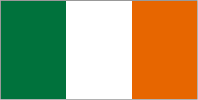
New Year's Eve (Oíche Chinn Bliana, Oíche na Coda Móire, or
Oíche Chaille) celebrations in major cities are modest, with most people
favouring small parties in the home for family and friends. Pubs and clubs
across the country hold events on New Year's Eve, particularly in larger
cities.
Israel

Hebrew New Year festival is called " Rosh Hashanah
".It is a sacred time when people think about what they have done wrong in
the past and promise that they will be better in the future.Data " Rosh
Hashanah " varies each year according to the Hebrew calendar.Thus, the
Hebrew New Year is coming in the first two days of the seventh month.To set the
date for farmers to be able to go to Jerusalem before the rainy season.The
first 10 days of this month are the most holy.In celebration of Rosh Hashanah,
everyone must give account to God for the behavior during the year
ends.Nevertheless, all Jews are offered 10 days between New Year and the Day of
Judgment , " Yom Kippur " to repent of the evil they have done. On
Yom Kippur, God writes the future fate of everyone in the book.Therefore,
people send greeting cards with traditional message " Whether you 're
writing a good year !". Special ceremony held in the synagogue, where they
play the shofar, a special tool.Children receive new clothing and meals include
fruits and flour products required to remember harvest time.
Italy
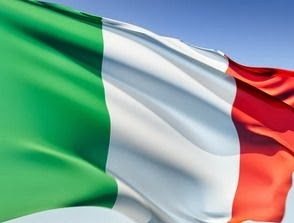
In the New Year, called "Capodanno" Italians tend
to put food on the table special, which is said to bring wealth and abundance.
In Naples, the New Year is greeted by a particular habit, which is to throw out
the window old objects, symbols of the past year. Thus, furniture, dishes,
clothes, etc.. reach the street, delusions scavengers who must go at night to
clean. Tradition, however, tends to disappear because it shows real risk to
pedestrians.
Japan
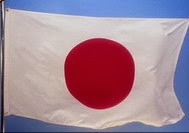
For Japanese New Year ("Oshogatsu") is one of the
most important celebrations and a symbol of renewal. In December organized
"forget the year party" or "Bonenkai" that people leave
behind the problems and worries of the track to be completed and ready for a
new beginning. Misunderstandings and animosities are forgotten. On December 31,
at midnight, families go to the nearest temple to share saké (traditional
drink, no) and to assist in the 108 kick gong announcing the passage of the new
year (this figure represents the number of sins accumulated in a soul
throughout the year, and symbolizes the banishment gong strikes sins and purify
souls one by one). On January 1, children receive "otoshidamas" -
small gifts with money inside.
Korea
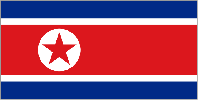
On the first day of the New Year, it also goes by the sea
for sunrise. The beaches are full of people waiting for the appearance of the
Sun, an opportunity to put their wishes in mind that they will come true in the
new year. New Year's Day is called Sul-nal, and in this day Koreans wearing
traditional clothing, called Han-Boks and New Year traditional food is
Dduk-gook, a kind of soup.
Lebanon

In Lebanon, people celebrate New Year's Eve with a dinner
attended by family and friends. The dinner features traditional dishes such as
tabouli, hummus, kibbi, and other Lebanese foods. These celebrations could also
take place in restaurants and clubs. Game shows are also organized where people
can try to win money. The countdown to New Year's is broadcast through the
leading TV channel and the celebrations usually continue until sunrise.
Fireworks are lit throughout the night.
Mexico

Relatives gathered around the TV waiting for the clock to
beat midnight. As in Spain, at each beat Mexicans eat a grape and they make a
wish. Then those present and embracing their wishes a happy year. Women wear
red underwear, to be lucky in love in the New Year. Others come with suitcases
around the house to partake of trips throughout the year.
Macedonia

New Year's Eve is celebrated across Macedonia. New Year's
Day is celebrated by day-long fireworks shows. The day is celebrated together
with family or friends at home or in restaurants, clubs, cafés and hotels.
During the day-time celebration children get gifts. Evening celebrations
include food, music, and dancing to both traditional Macedonian folk music, and
modern music. New Year's Eve is celebrated on December 31 and also on January
14 according to the Macedonian Orthodox (Julian) Calendar.
Malta
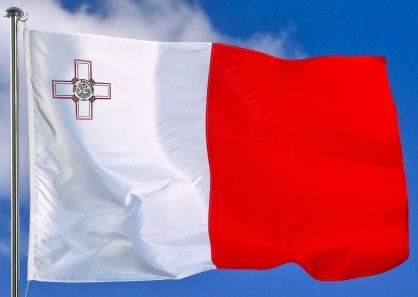
Malta organized its first New Year's street party in 2009 in
Floriana. The event was not highly advertised and proved controversial, due to
the closing of an arterial street for the day. In 2010 there were the first
national celebrations in St. George's Square, Valletta although amateur
fireworks are very popular in Malta, they are almost totally absent on New
Year's Eve.
Netherlands

At the turn of the year, the streets are burning Christmas
trees and launching fireworks to ward off evil spirits of the old year. Day
last year (31 December) is called "Oudejaarsdag" and place it at huge
fireworks. In the Netherlands, this is the only day in which the fireworks are
permitted, is on sale for only three days before the New Year.
Nigeria
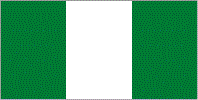
In Nigeria, the New Year's Eve is often celeberated by going
to Church; others go to nightclubs, and parties organised by individuals,
communities or State government like the Lagos Countdown. The Lagos Countdown
is an event in Nigeria, created to increase tourism and making Lagos a premium
destination for business and leisure. The event kicks off in December and lasts
till the 1st of January. It is attended by an average of 100,000 people. The
event takes place at the Eko Atlantic city, beside the Barbeach attracting
thousands of domestic and foreign tourists who are entertained every evening by
different artists...
Peru
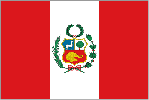
Before the New Year, people make rag dolls or crepe paper
(MUÑECA), which is the year's over. The dolls are then exposed to the house
until December 31 at midnight, when burned in the street. There is also the
belief that if you wear a certain color to 12 at night, it could bring good
luck in some areas, so it is said that yellow is a sign of money and red can
bring good luck in love. Also, who wants to travel all year must run around the
block with a suitcase in hand, at 12.00 at night fix.
Philippines
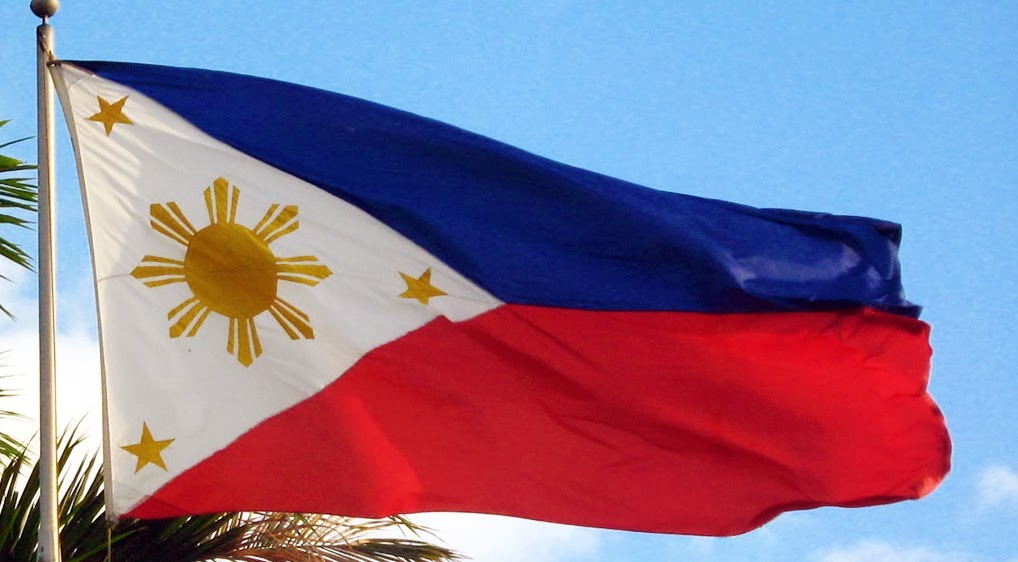
In the Philippines, New Year's Eve (Bisperas ng Bagong Taon)
is a non-working holiday. Filipinos usually celebrate New Year's Eve in the
company of family or close friends. Traditionally, most households host or
attend a midnight feast called the Media Noche. Typical dishes included holiday
fare, pancit (for long life) and hamón. Lechon (roasted pig), is usually
prepared, as is barbecued food. Some refrain from serving chicken, as their
scratching and pecking for food is unlucky, being an idiom for a hand-to-mouth
existence.
Many opt to wear new, bright, or colourful clothes with
circular patterns, such as polka dots, or display sweets and twelve round
fruits as the centrepiece, in the belief that circles attract money and fortune
and that candies represent a sweeter year ahead. Several customs must only be
done at midnight: some throw about coins to increase wealth in the coming year,
or jump to increase their height, while some follow the Spanish custom of
eating twelve grapes, one for each month of the year. People also make loud
noises by blowing on cardboard or plastic horns, called torotot, banging on
pots and pans, playing loud music, blowing car horns, or by igniting
firecrackers, in the belief that the din scares away bad luck and evil spirits.
Urban areas usually host many New Year's Eve parties and
countdown celebrations hosted by the private sector with the help of the local
government. These parties, which include balls hosted by hotels, usually
display their own fireworks and are often very well-attended. Some popular
locations for celebrations include the area along Manila Bay at Roxas Boulevard
or Luneta Park in Manila, the intersection of Ayala and Makati Avenues in
Makati City, Resorts World Manila and SM Mall of Asia in Pasay City, Quezon
Memorial Circle in Diliman and Eastwood City in Libis, Quezon City, and
Bonifacio Global City in Taguig City.
Poland
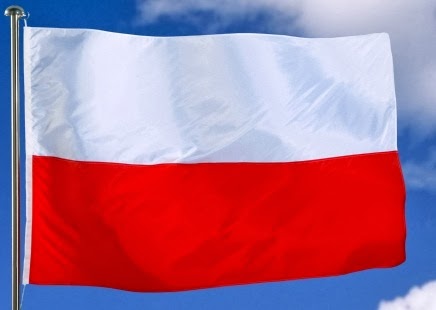
New Year is known as "Night of St. Basil"
("Sylvester"). This name comes from legends of Pope Sylvester. They
say he imprisoned a dragon called Leviathan, which was supposed to be escape
only the first day of the year 1000, will devour the whole earth and all people
and will burn the heavens. On the first day of the year that the world did not
end, it was considered a reason for joy and then called Night St. Basil.
Portugal

In Portuguese, the custom has been preserved grains, just as
the grapes have been replaced with figs, each of the 12 fruits eaten meaning
each a wish.
Romania

Traditional celebrations of New Year's Eve (Revelion) are
the norm in Romania. Romanians follow centuries-old customs, rituals, and
conventions. Children sing "Pluguşorul" and "Sorcova",
traditional carols that wish goodwill, happiness and success.
Parties are common in the evening. Since the Romanian
Revolution of 1989, Romanians have gathered in the University Square in
Bucharest. Other significant parties occur in Piaţa Constituţiei and Romexpo
where Sectorul 5 mayor Marian Vanghelie organizes Vangheliona very cheep party
for thousands of people featuring oriental and tropical food, musical icons
such as Enrique Iglesias or Toni Braxton, many other Romanian music stars, and
a fireworks show.
Russia
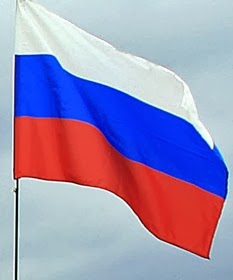
Most Russians celebrate New Year's Eve with their families
and close friends. The origin of this holiday in Russia derives from Christmas.
Christmas was also a major holiday in Russia until it was banned, with all
other religious holidays, by the Communist Party. To compensate for the absence
of Christmas, New Year's was celebrated as much as Christmas was, but without
the religious aspect of the holiday. Even after the fall of the Soviet Union,
New Year's is celebrated in Russia and has became a Russian tradition. There is
an old superstition that if the first visitor (especially an unexpected one) on
January 1 is a man, the year will be good. People also try to start the new
year without debts.Celebration usually starts one or two hours before midnight.
A common tradition is to "say farewell to the old year" by
remembering the most important events of the last twelve months. At five
minutes to twelve most people watch the president's speech on TV or watch
popular New Year TV shows. There is a tradition to listen to the Kremlin clock
bell ringing twelve times on the radio or on TV. During these last twelve
seconds of the year people keep silence and make their secret wishes for the
next year. After the clock strikes, they drink champagne and have rich dinner,
watching TV concerts and having fun. Some people light fireworks outside and
visit their friends and neighbors. As december 30 and 31 are working days, a
lot of people also have small parties at work, though December 31 is mostly
spent at home or with friends.
Singapore
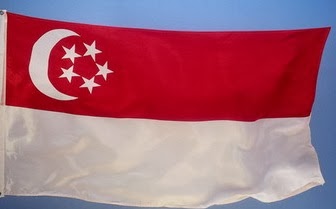
The biggest New Year's Eve celebration in Singapore takes
place in the Marina Bay area. It is attended by 250 000 or more people. The
party spans around the bay area starting from the Marina Bay floating Stadium
to the Esplanade promenade, the Esplanade Bridge, Benjamin Sheares Bridge,
Merlion Park, and the Padang at City Hall facing the Marina Bay. The
celebrations are also visible from nearby hotels such as The Fullerton Hotel,
Marina Mandarin, The Ritz-Carlton Millenia, Marina Bay Sands, offices located
at Raffles Place, Marina Bay Financial Centre, Residential Apartments at The
Sail @ Marina Bay, and from The Singapore Flyer. On the waterfront of Marina
Bay, 20 000 inflatable "wishing spheres" carrying 500 000 wishes written by Singaporeans form a
visual arts display filled with brilliant colors beamed from the spotlights
erected along the Esplanade promenade open area. Audiences are also entertained
by a host of variety shows and concerts staged at the Marina Bay floating
platform stage, featuring local and overseas artists. The shows are viewable by
all at the bay and telecast live on various television channels in Republic of
Singapore.
At one minute to midnight, the concert emcees initiate the
final countdown together with the audience. When midnight arrives, fireworks
are launched from the waters at Marina Bay, lighting up the whole bay against
the backdrop of the Singapore skyline.
Spain
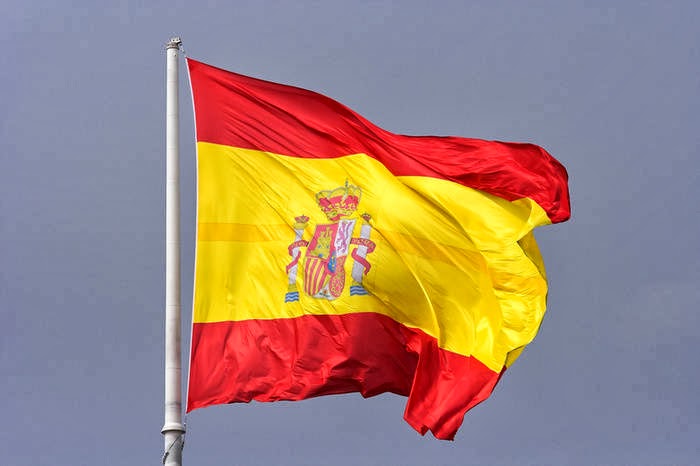
Spanish New Year's Eve (Nochevieja or Fin de Año)
celebrations usually begin with a family dinner, traditionally including shrimp
or prawns, and lamb or capon. Spanish tradition says that wearing new, red
underwear on New Year's Eve brings good luck. The actual countdown is primarily
followed from the clock on top of the Casa de Correos building in Puerta del
Sol Square in Madrid. It is traditional to eat twelve grapes, one on each chime
of the clock. This tradition has its origins in 1909, when grape growers in
Alicante thought of it as a way to cut down on the large production surplus they
had had that year. Nowadays, the tradition is followed by almost every
Spaniard, and the twelve grapes have become synonymous with the New Year. After
the clock has finished striking twelve, people greet each other and toast with
sparkling wine such as cava or champagne, or with cider.
After the family dinner and the grapes, many young people
attend cotillones de nochevieja parties (named for the Spanish word cotillón,
which refers to party supplies like confetti, party blowers, and party hats) at
pubs, clubs, and similar places. Parties usually last until the next morning
and range from small, personal celebrations at local bars to huge parties with
guests numbering the thousands at hotel convention rooms. Early the next
morning, party attendees usually gather to have the traditional winter
breakfast of hot chocolate and fried pastry (chocolate con churros).
Sri Lanka
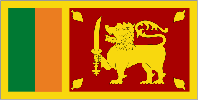
In April, when the sun moves from the house, in the house of
Aries, the people of Sri Lanka began to celebrate the New Year. It usually
falls on 13 or April 14.
Sweden
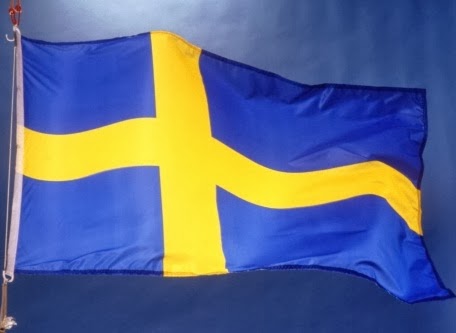
In Sweden, New Year's Eve is usually celebrated with
families or with friends. A few hours before and after midnight, people usually
party and eat a special dinner, often three courses. New Year's Eve is
celebrated with large fireworks displays throughout the country, especially in
the cities. People over the age of 18 are allowed to buy fireworks, which are
sold by local stores or by private persons. While watching or lighting
fireworks at midnight, people usually drink champagne.
Switzerland 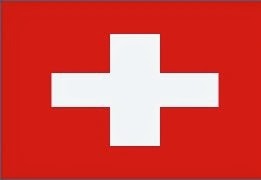 Old New Year is celebrated on January 13, after the Julian calendar.And here, people out on the streets, dressed in good and bad spirits.
| 





